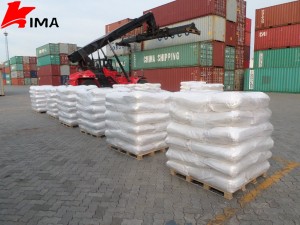Hydroxyethyl Methyl Cellulose For Construction
Hydroxyethyl Methyl Cellulose, or HEMC, is a versatile compound that has become increasingly popular in the construction industry. It is a water-soluble polymer derived from cellulose and is commonly used as a thickening and binding agent in various applications, such as mortar, grouts, and plaster. HEMC is also known as methyl hydroxyethyl cellulose (MHEC) or methyl hydroxypropyl cellulose (MHPC) and is available in various grades, each with specific properties and characteristics.
In this article, we will explore the properties and benefits of HEMC and its applications in the construction industry.
Properties of HEMC
HEMC is a white or off-white powder that is odorless and tasteless. It is soluble in cold water and forms a clear or slightly hazy solution. The viscosity of the solution depends on the concentration of HEMC and the degree of substitution (DS), which is the ratio of the number of hydroxyl groups substituted by methyl and hydroxyethyl groups to the total number of hydroxyl groups in the cellulose molecule.
HEMC has several desirable properties that make it an ideal additive in construction materials:
- Water retention: HEMC can absorb water and hold it in the mix, reducing the amount of water needed and preventing shrinkage and cracking.
- Thickening: HEMC increases the viscosity of the mix, improving workability and preventing segregation.
- Binding: HEMC acts as a binder, holding the mix together and improving adhesion to surfaces.
- Film formation: HEMC can form a thin film on surfaces, improving water resistance and durability.
Applications of HEMC in Construction
HEMC is widely used in the construction industry as an additive in various materials. Some of its common applications include:
- Mortar: HEMC is added to mortar to improve workability, reduce water demand, and increase water retention. It also enhances the bonding strength and durability of the mortar.
- Tile Adhesives: HEMC is used in tile adhesives to improve wetting and reduce slip, improving the adhesion and durability of the tiles.
- Grouts: HEMC is added to grouts to improve workability, reduce shrinkage and cracking, and enhance water resistance.
- Stucco and Plaster: HEMC is used in stucco and plaster to improve workability, reduce cracking, and increase water retention. It also enhances the bonding strength and durability of the material.
- Self-leveling compounds: HEMC is added to self-leveling compounds to improve flow and leveling, reduce shrinkage and cracking, and enhance water resistance.
Benefits of HEMC in Construction
HEMC offers several benefits in construction materials, including:
- Improved workability: HEMC improves the workability of materials, making them easier to handle and apply.
- Reduced water demand: HEMC reduces the amount of water needed in the mix, improving the strength and durability of the material.
- Increased water retention: HEMC improves the water retention of materials, preventing shrinkage and cracking and enhancing their durability.
- Enhanced adhesion: HEMC improves the adhesion of materials to surfaces, enhancing their durability and strength.
- Improved water resistance: HEMC forms a thin film on surfaces, improving their water resistance and durability.
Conclusion
HEMC is a versatile compound that offers several benefits in the construction industry. Its unique properties make it an ideal additive in various materials, such as mortar, grouts, and plaster. By improving workability, reducing water demand, and enhancing water retention and adhesion, HEMC improves the strength, durability, and performance of construction.

Post time: Mar-07-2023
